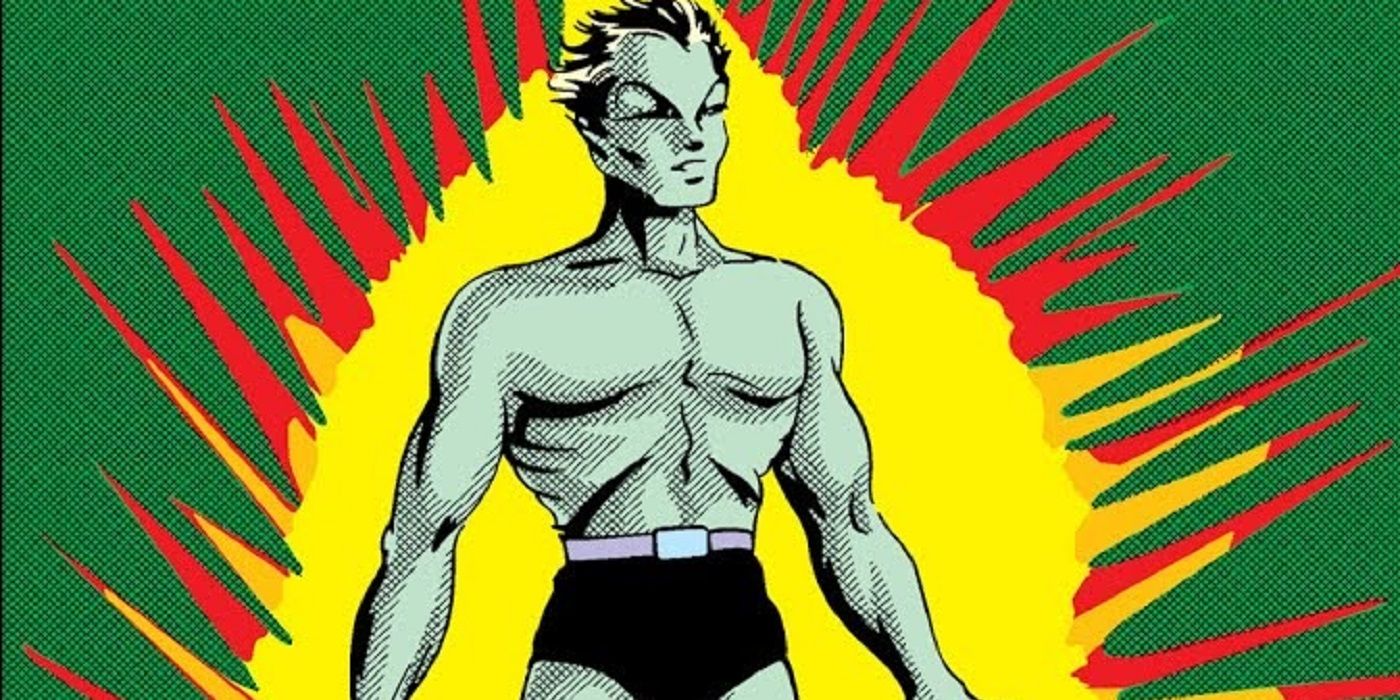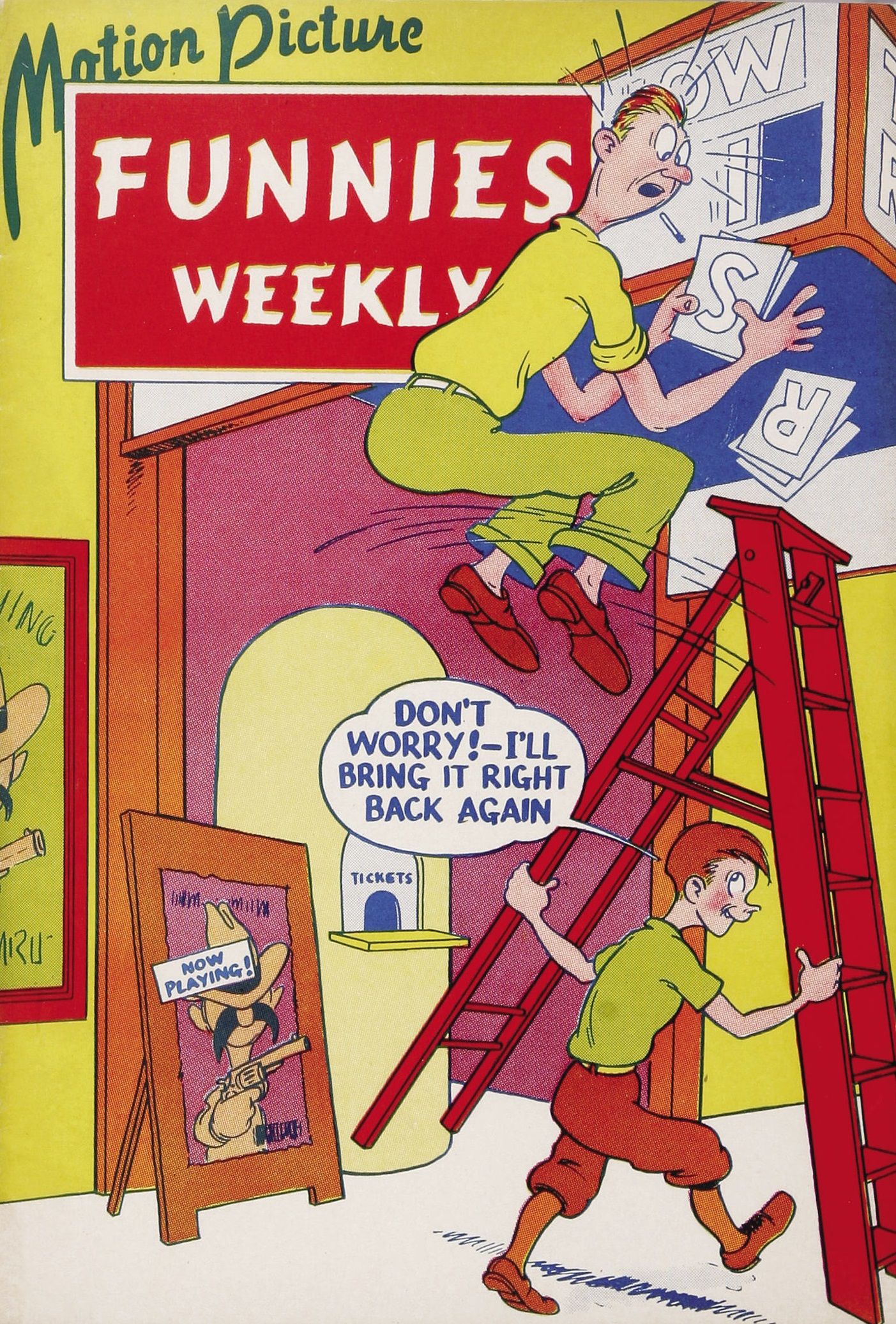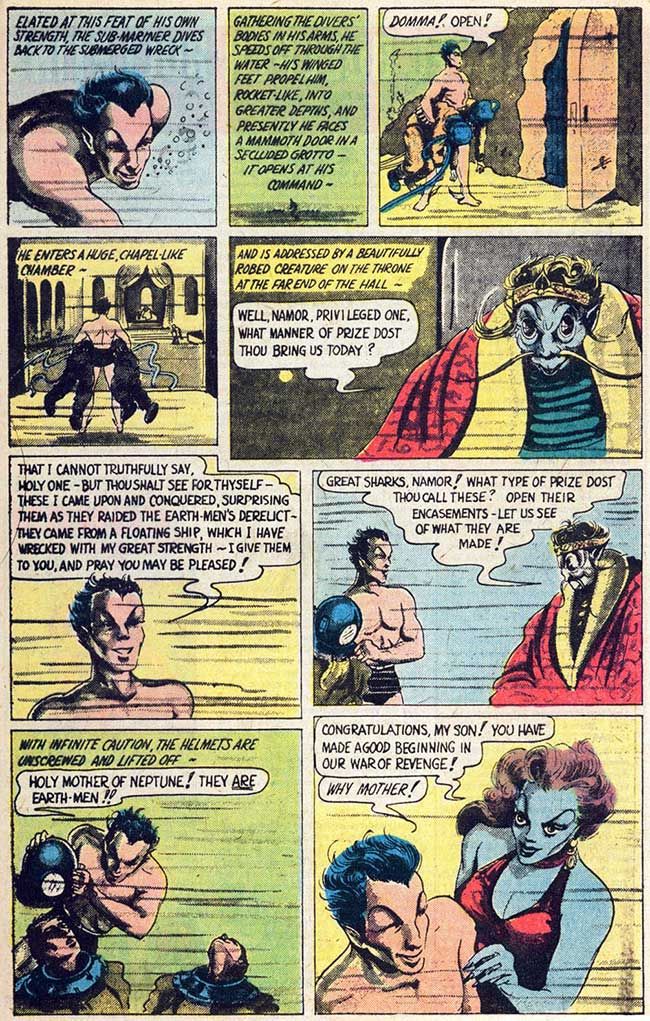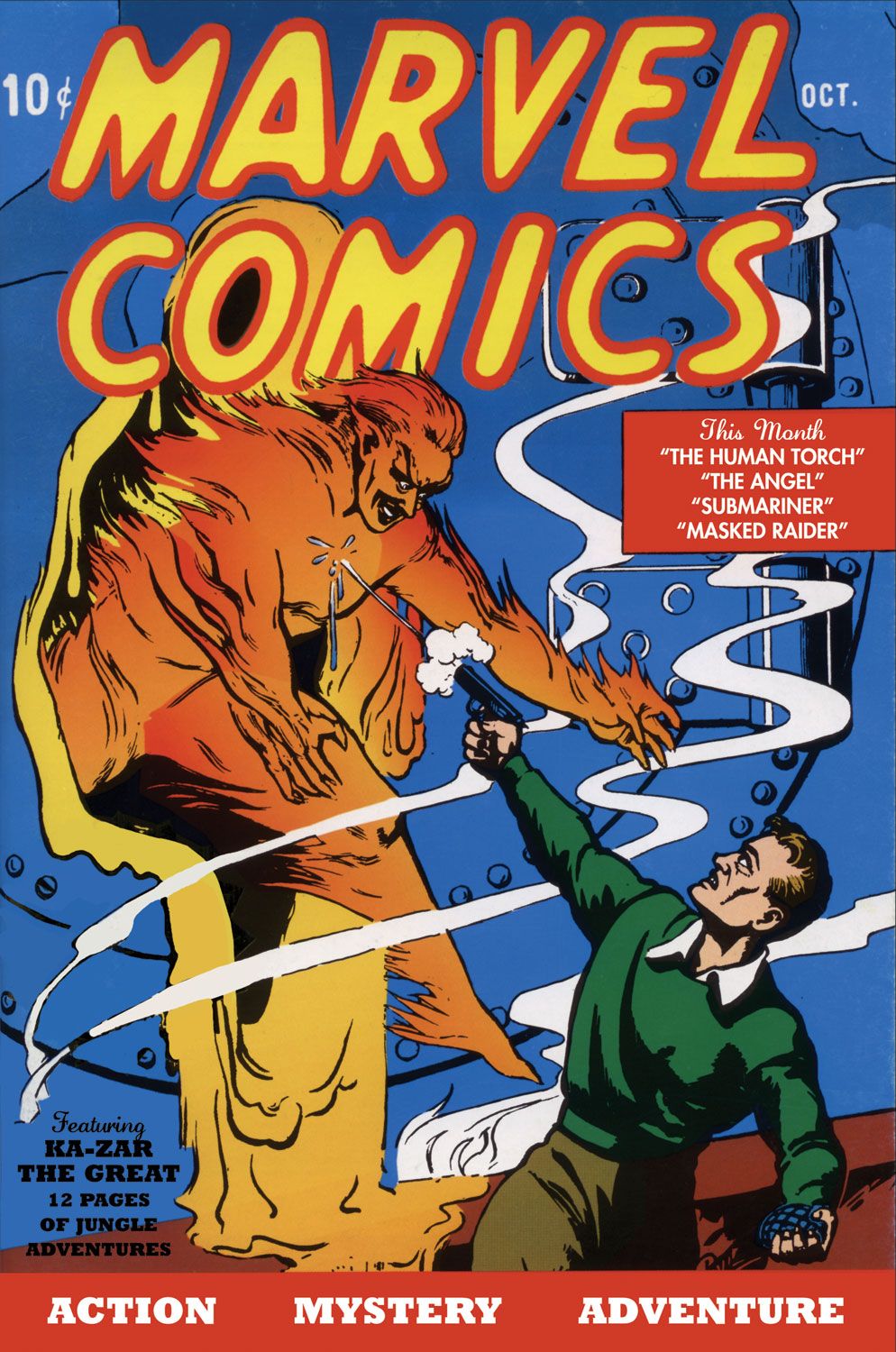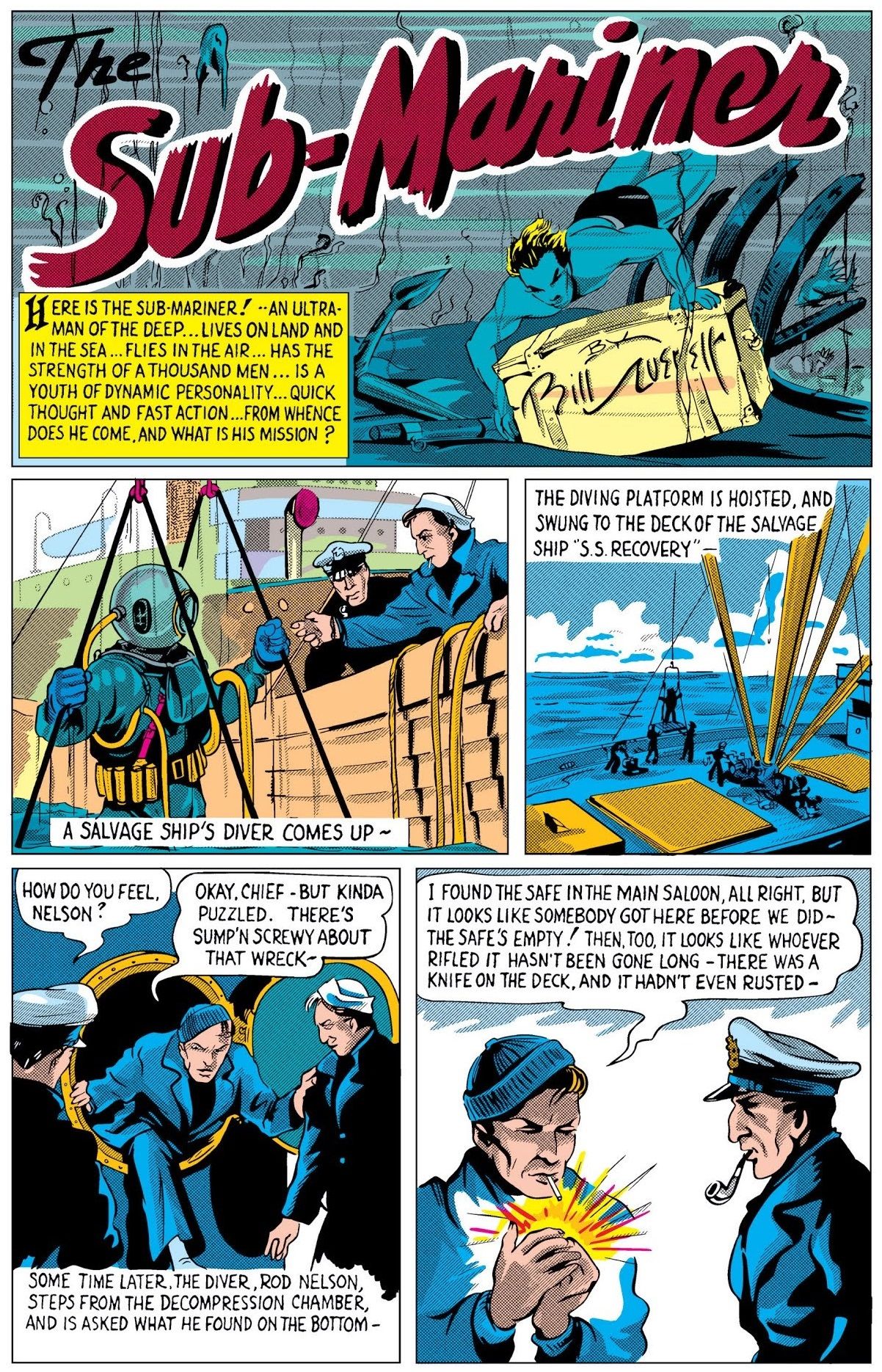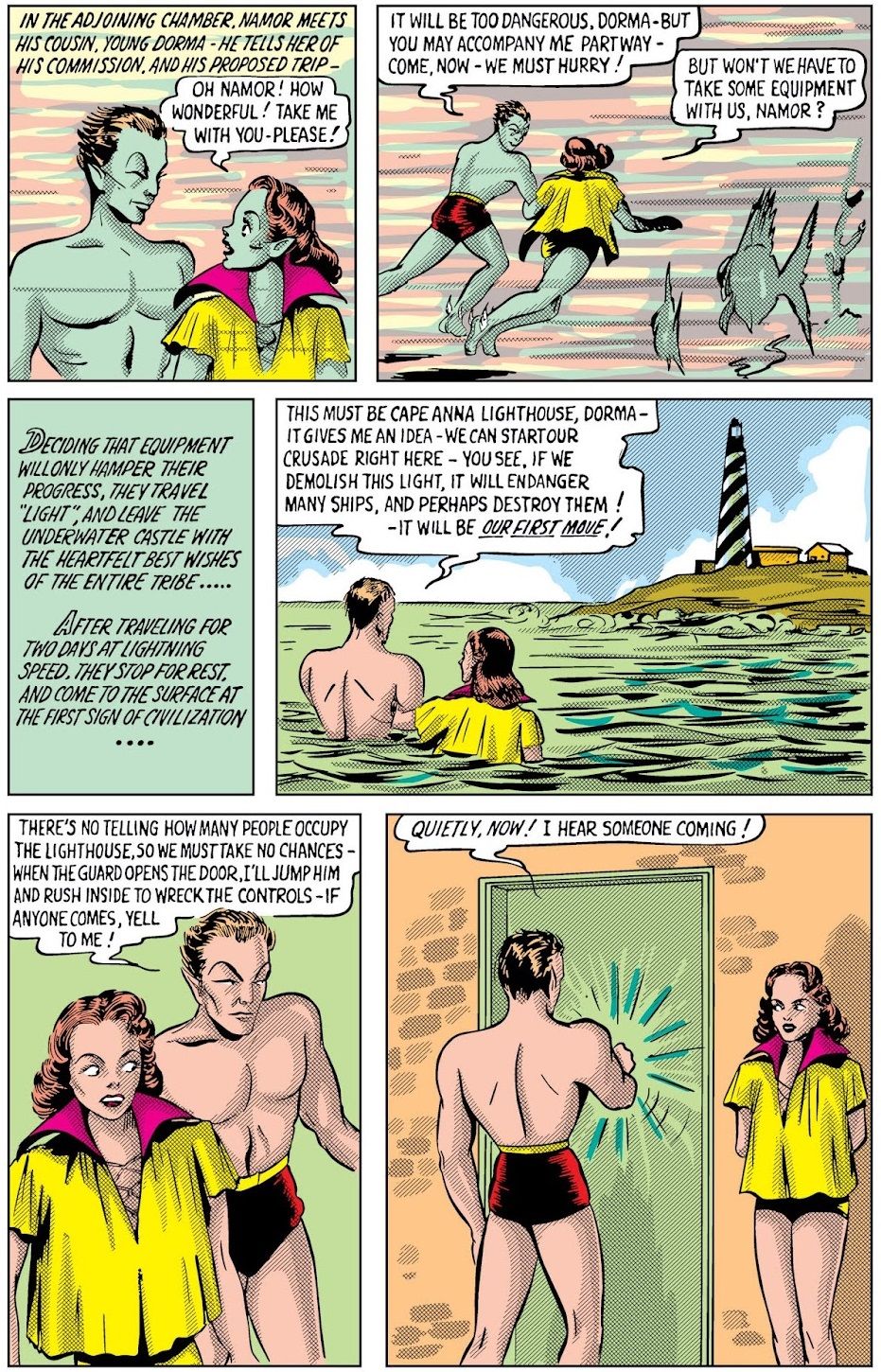In the latest Comic Book Legends Revealed, we try to come to terms with the surprising controversy over which comic Namor first appeared in
Welcome to Comic Book Legends Revealed! This is the eight hundred and seventy-fourth installment where we examine three comic book legends and determine whether they are true or false. As usual, there will be three posts, one for each of the three legends. The next FEW installments will be all Namor-centric, in honor of the historic Marvel character making his Marvel Cinematic Universe debut.
NOTE: If my Twitter page hits 5,000 followers, I'll do a bonus edition of Comic Book Legends Revealed that week. Great deal, right? So go follow my Twitter page, Brian_Cronin!
COMIC LEGEND:
Namor actually first appeared in Marvel Comics #1, which was going to be REPRINTED in Motion Picture Funnies Weekly #1.
STATUS:
I'm Going With False
As promised in a recent Comic Book Legends Revealed, let's finally delve into the quagmire of the great "Did Motion Picture Funnies Weekly #1 REALLY come out before Marvel Comics #1?" debate, a debate that we don't have a DEFINITIVE answer for, but I have my answer, at least. So here we go!
WHAT IS THE STANDARD STORY OF NAMOR'S FIRST APPEARANCE?
Okay, let's quickly recap the basic story of Namor's debut. As I've noted a few times, the early days of most comic book companies generally involved what were called comic book "packagers." A comic book packaging studio would write and draw an entire comic book for you. You would own the characters, but they would write and draw them, and you only had to publish the comics and take in the cash. Of course, you had to pay them beforehand. Obviously, then, if you wanted to quickly start up your own comic book company, then hiring a comic book packaging studio was the easiest way to do it by far.
One of the most popular comic book packaging studio was Lloyd Jacquet's Funnies, Inc., which he built up through a number of freelancers for Centaur Publishing, one of the earliest comic book companies (and one of the few to come around before the comic book packaging system had taken hold. Obviously, National Comics, what is now DC, was the MOST famous comic book company that existed before comic book packaging studios).
Comic book promotional giveaways were big at the time (in fact, as I noted in the above linked Comic Book Legends Revealed, comic book giveaways basically CREATED the modern comic book industry), and so Jacquet came up with the idea of doing a giveaway comic called Motion Picture Funnies Weekly for movie theaters (a full 36-page comic book, rather than the short pamphlets most other comic book giveaways were like).
In this issue, there was a Sub-Mariner story by Bill Everett (in black and white)...
The comic book was not picked up to go to an actual series (hence my recent legend where I noted that Namor's first appearance was never published in Motion Picture Funnies Weekly #1, because that comic book was never actually published).
Then, as the story goes, Jacquet took that comic book idea and used it for Marvel Comics #1, instead...
That's the generally accepted story...but is there a DRAMATIC TWIST?!?! Did Namor actually appear in Marvel Comics #1 FIRST?!?!
WHAT COMIC BOOK DID NAMOR ACTUALLY DEBUT IN?
This theory is generally credited to the excellent comic book historian/collector, Warren Reece, and here is the gist of it. First of all, Jacquet PAID Everett for Marvel Comics #1, not Motion Picture Funnies Weekly #1. Secondly, we don't know for an absolute CERTAINTY when Motion Picture Funnies Weekly was produced, because, again, it was never published, so there is no date for the book's release, and so there is some anecdotal evidence that people recall seeing Marvel Comics #1 on the stands BEFORE Motion Picture Funnies Weekly #1 came out. Finally, Motion Picture Funnies Weekly #1 was done in black and white, and the special sort of effect that Everett came up for water in that first issue wouldn't have made as much sense if the comic book was done in black and white and not color, like Marvel Comics #1 was...
Reece's theory is that Motion Picture Funnies Weekly, as a sort of mock-up comic book designed to get people to pay to make it a real comic book, would have made more sense as being filled with reprints of other material, and since we don't know for SURE when Motion Picture Funnies Weekly #1 was around, it's true that it is possible that Marvel Comics #1 came out first.
Now, what do I think? Matt Nelson wrote an excellent column on the topic, and I generally find myself agreeing with Nelson, specifically on the one major piece of evidence that Motion Picture Funnies Weekly came first, namely the end of page 8. In Motion Picture Funnies Weekly, this said "Continued next issue," but in Marvel Comics #1, it is blacked out...
and then the story continues for four more pages...
It basically doesn't make any sense for the 12-page story to be cut DOWN to 8 pages in that way, as the 8-pager is clearly a distinct story in and of itself.
In addition, George Kapitan wrote a letter to Overstreet years ago stating that Everett specifically told him that that precisely WAS what happened (that he did the 8 pages first, and then added the four more pages later). That seems like stronger evidence that people who just remembered seeing Marvel Comcis #1 first decades after the fact, right?
The coloring effect is intriguing, but I think you could easily argue that with a comic book packaging studio, Everett wouldn't have known whether the art he was doing was going to be published in color or not. As to the payment, it easily could be that he wasn't paid for the story until it DID sell, as Jacquet would know that he could sell it to someone else if Motion Picture Funnies Weekly didn't work out, and the way his deals worked, once he DID sell it to someone else, they had an exclusive right to the character, so it makes more sense to shop the story somewhere else BEFORE, rather than AFTER being published in another comic book.
That stuff is admittedly a bit more of a speculative deal, but the 8 pages/4 pages is not. I think that that situation is fairly explicit. Why would the one comic end with a "Continued next issue" on Page 8 if it was done AFTER the 12 page version? It doesn't make sense.
Thanks to Matt Nelson for his work, and thanks, too, to Warren Reece, for introducing such an interesting theory, even I tend to lean against it.
SOME OTHER ENTERTAINMENT LEGENDS!
Check out some entertainment legends from Legends Revealed:
1. What Famous Talk Show Host Wouldn’t Appear on the Simpsons if They Made Fun of Him?
2. Was the Famous Star Trek Interracial Kiss Originally Going to be Between Uhura and SPOCK?
3. Were the Little House on the Prairie Sets Destroyed So That No One Else Could Use Them?
4. Was the Song “Hey Man, Nice Shot” Inspired by Kurt Cobain’s Suicide?
PART TWO SOON!
Check back soon for part 2 of this installment's legends!
Feel free to send suggestions for future comic legends to me at either cronb01@aol.com or brianc@cbr.com

